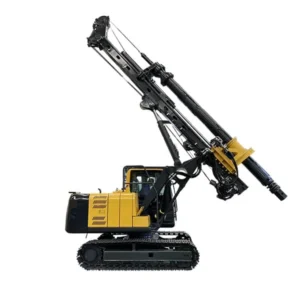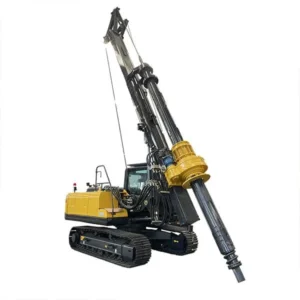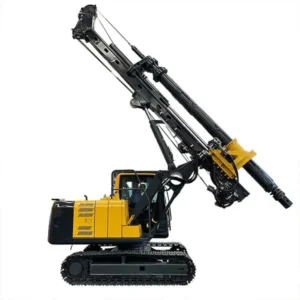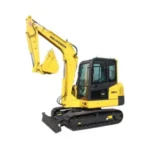Einführung

The development of rotary drilling rigs represents a pivotal advancement in the construction industry, fundamentally altering the landscape of deep foundation establishment and large-scale structure construction. This comprehensive exploration delves into the evolution, intricate technology, diverse applications, significant benefits, and future prospects of rotary drilling rigs.
History and Evolution
Rotary drilling rigs originated in the early 20th century, initially serving the oil exploration industry before expanding into construction applications. Early rigs relied on mechanical principles and were limited in depth and efficiency. The evolution gained momentum with the introduction of hydraulic systems, allowing for greater power and control. Today, rigs incorporate sophisticated electronics, automation, and data-driven systems, enhancing performance and reliability.
Technology Behind Rotary Drilling Rigs
Modern rotary drilling rigs operate through a combination of rotary motion and hydraulic power. A hydraulic system drives the rotation of a drill bit, which penetrates various geological formations. The rigs are equipped with sensors that monitor drilling parameters such as torque, pressure, and depth in real time. Advanced control systems optimize drilling operations, ensuring precision and safety while minimizing environmental impact.
Applications in Construction
Rotary drilling rigs play a vital role across a spectrum of construction activities:
- Fundamentbau: They excel in creating deep, stable foundations for high-rise buildings, bridges, and infrastructure projects. By drilling into bedrock or load-bearing strata, these rigs ensure structural integrity and stability.
- Piling: In urban settings or areas with soft soil, rotary rigs efficiently install piles to support structures. This method mitigates settlement issues and provides a robust foundation for buildings and industrial facilities.
- Tunneling: Rigs are employed to bore tunnels for transportation networks, such as subways and roadways. The precision and efficiency of rotary drilling rigs minimize disruption to existing infrastructure and urban environments.
- Bergbau: In mining operations, these rigs extract minerals and ores from deep underground deposits. Their ability to handle varying geological conditions makes them indispensable in the mining industry.
Key Benefits
Efficiency and Speed
Rotary drilling rigs excel in saving time and optimizing construction schedules by virtue of their continuous drilling capabilities and adaptability to different soil conditions. Unlike traditional methods that may require frequent interruptions for equipment adjustments or soil changes, rotary rigs operate seamlessly through various geological formations, ensuring uninterrupted progress on construction sites. This efficiency not only accelerates project timelines but also reduces overall costs associated with prolonged construction periods and equipment downtime.
Precision and Safety
The integration of advanced technology into rotary drilling rigs enables precise control and monitoring of drilling operations. Real-time data feedback mechanisms continuously assess drilling parameters such as torque, pressure, and depth, allowing operators to make immediate adjustments as needed. This proactive approach minimizes the risk of deviations or errors during drilling, thereby enhancing safety for both personnel and the surrounding environment. Such technological innovations contribute to maintaining high standards of safety and reliability throughout the construction process, mitigating potential hazards and ensuring project success.
Umweltbelastung
In response to growing environmental concerns, modern rotary drilling rigs are engineered to minimize their footprint on surrounding ecosystems. By employing noise-reducing technologies and vibration damping mechanisms, these rigs mitigate disturbances to nearby communities during operation. Furthermore, stringent adherence to environmental regulations and proactive measures such as dust suppression systems and efficient waste management practices underscore their commitment to sustainability. Through these advancements, rotary drilling rigs uphold environmental stewardship principles while meeting the rigorous demands of contemporary construction projects.
Fallstudien
Anwendungen von Rotary Drilling Rigs

| Project | Beschreibung | Benefits |
|---|---|---|
| Burj Khalifa, Dubai | Foundation drilling for the world’s tallest building. | Enhanced stability, rapid construction. |
| Crossrail, London | Tunneling beneath densely populated urban areas. | Minimized disruption, efficient tunneling. |
| Panama Canal Expansion | Pile driving for locks and infrastructure. | Improved stability, environmental sensitivity. |
Abschluss
The evolution of Drehbohrgeräte has been instrumental in reshaping construction methodologies and advancing infrastructure development globally. From humble beginnings in oil exploration to becoming indispensable tools in modern construction, these rigs exemplify technological innovation and engineering excellence. Looking ahead, ongoing advancements promise further improvements in efficiency, safety, and environmental sustainability, solidifying rotary drilling rigs’ pivotal role in building the future.
FAQ
Q:How do Drehbohrgeräte work?
A:Rotary rigs utilize hydraulic power to rotate a drill bit into the ground, cutting through soil and rock layers to create openings for foundations or tunnels.
Q:What are the advantages of rotary drilling rigs in construction?
A:They offer speed, precision, and versatility, enabling efficient foundation installation, pile driving, tunneling, and mining operations.
Q:How do Drehbohrgeräte contribute to environmental sustainability?
A:Modern rigs incorporate technologies that minimize environmental impact, such as reduced noise and vibration levels and adherence to strict regulatory standards.










-150x150.webp)
